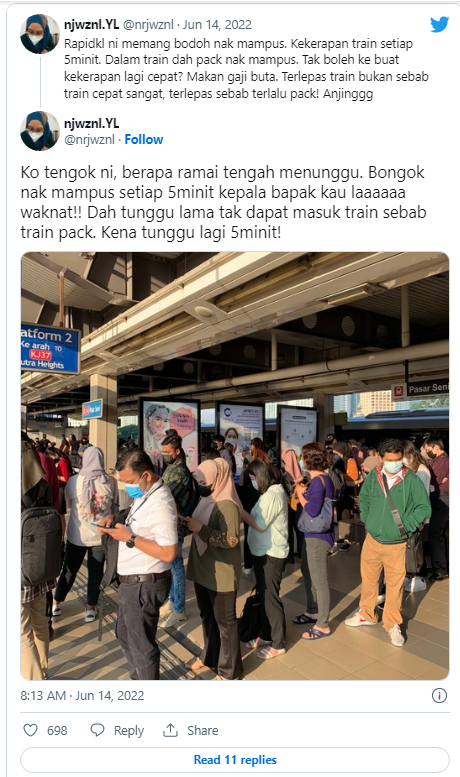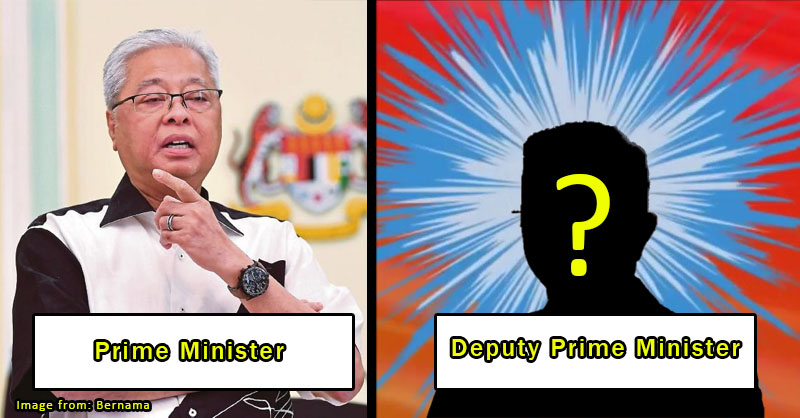Is free RapidKL better than driving? We forced a writer to try LRT for a week.

- 2.4KShares
- Facebook2.3K
- Twitter22
- LinkedIn20
- Email32
- WhatsApp85
Recently, PM Ismail Sabri announced that all RapidKL-operated public transport would be free for a month, to lessen the burden on the public:
“We understand the plight of the people, especially with the increase in the price of burdensome goods, and the rising cost of living.” – Ismail Sabri

This means that the public will be able to ride the LRT, MRT, BRT, monorail, and RapidKL buses free of charge until 15th of July. So, being broke, our writer decided to take advantage of the opportunity and take the LRT trains for a whole working week (5 days).
But of course, we don’t do anything if it doesn’t bring some kind of value. We also decided to chart the pros and cons of taking the train vs driving, as well as the costs (financial, time, and/or emotional) of both.
On the first day itself, this writer was late to work
Ok, there’s actually an explanation for this. Apparently even with the free LRT month, you still need a minimum balance of RM5 in your Touch ‘n Go card (if that’s your method of payment). Sadly, our writer (who usually drives) realized he forgot to top up his card, so he had to go do that first. In heavy rain. Without an umbrella. Great start to the week.

Anyway, with Wawasan LRT station in USJ 14, Subang Jaya as the origin point, our writer stopped at Kelana Jaya LRT station, because, logically speaking, since the Cilisos office is in Kelana Jaya, he thought it would be the closest to walk from. However, since it was raining, he had to take a Grab instead.
Cost of the Grab ride? RM15 for a trip from Kelana Jaya station to our office (distance 2.5 km).
The process was repeated for Day 2, except this time he walked 15 minutes, and turned up to office early (albeit drenched in sweat). However, we later found out from Cilibos that there actually was a closer station (Lembah Subang; 50 sen cheaper for LRT fare) that was literally right behind the office. So the remainder of the experiment was done with Lembah Subang station instead.

In any case, at the end, after we tallied the potential expenses…
Taking the train cost nearly HALF as much as driving, and is great for avoiding jams
So to break this down, the amount our writer personally spends per working week on driving is RM40 for gas, and RM25 for TNG parking fees, which total up to about RM65 per working week.
On the other hand, if the RapidKL stuff hadn’t been free, our LRT week (including that one Grab ride) would have amounted up to just RM35.80! That’s a saving of RM29.20; nearly half the driving amount.
It’s also worth noting that there weren’t any significant differences in travel time (around 20-30 minutes minus walking to office), though, of course, with cars it depends on how bad the jam is. Because let’s face it; we’ve all experienced those hellish traffic jams where we just seem to be stuck for what seems like an eternity. Unless you ride a bike, of course.
With that being said, our trains don’t always run on time either, so it depends on your luck, really.
Of course, there was also the issue of going home. For this, our writer hitched a ride with various Cilisos colleagues, cos we just like going home late. The daily overall breakdown is as follows:
Monday: Kelana Jaya station > Grab to office. Transport back: Umar’s car
Tuesday: Kelana Jaya station > walked to office. Transport back: Umar’s car
Wednesday: Lembah Subang station > walked to office. Transport back: Umar’s car
Thursday: Lembah Subang station > walked to office. Transport back: Aqil’s motorbike (pillion) + train
Friday: Lembah Subang station > walked to office. Transport back: Umar’s car
As can be seen above, we also added some variety, by hitching a ride on a bike, and taking Grab.
Our weekly spending if we’d only used Grab (+/- RM15 per ride) for a week? Around RM150.

But wait, you’ll probably have noticed that we haven’t really talked about the hitching the ride with friends part. Well, of course it’s implied that you’ll need to have some kind of arrangement where you’d belanja your friend every now and then to compensate. However, when we asked them if they’d let us ride their vehicles for a year, all of them voiced their strong opposition to the idea.
Well, can’t really blame them to be honest. After all, our gracious chaperones were either from Cheras or Bangi, and would have to send our writer back to Subang for a whole year. Here’s exactly what they said:
“No. Don’t be (name of freeloader friend).” – Umar, Perodua Myvi driver
“No. Unless you were lighter, or if I changed the monoshock on my bike.” – Aqil, biker
“No, what the f*ck.” – Jake, Hyundai Matrix driver

But all in all, if you asked us to choose between driving and taking the train…
It really depends on what discomforts you’re willing to put up with
We’ll be really honest here: our writer actually really likes trains, cars, and bikes. All for different reasons; each have their pros and cons. But since the article is focused on trains, we’ll say this as a conclusion: trains are definitely much cheaper, but you’ll have to put up with the stress of being around crowds (which can get bad during rush hour especially). As a friend said: ‘being in the LRT is like being in a sardine can’.
There’s also another important factor to consider: the distance of your destination from the train station. Because unless you work at the train station itself, chances are there will be some kind of commute between the station and your workplace. While walking is by far the cheapest and healthiest method, Malaysia’s hot and rainy weather can make it difficult; sometimes impossible, as compared to, say, Japan.

And while our writer didn’t find much issue from his own personal experience of taking the trains, many often do, which is probably why the PM’s free public transport initiative was greeted with comments telling the government to fix the system first. As this person said:
“Price not an issue if the service is efficient. Why does the ministry never get this?” – Frequent commuter
Anyway, while the free LRT gave him an opportunity to experience public transport, this writer is going back to driving for now, more so for the convenience than anything else. After all, you can blast your own tunes, go pretty much anywhere on short notice, and most importantly, be away from other people.
- 2.4KShares
- Facebook2.3K
- Twitter22
- LinkedIn20
- Email32
- WhatsApp85




